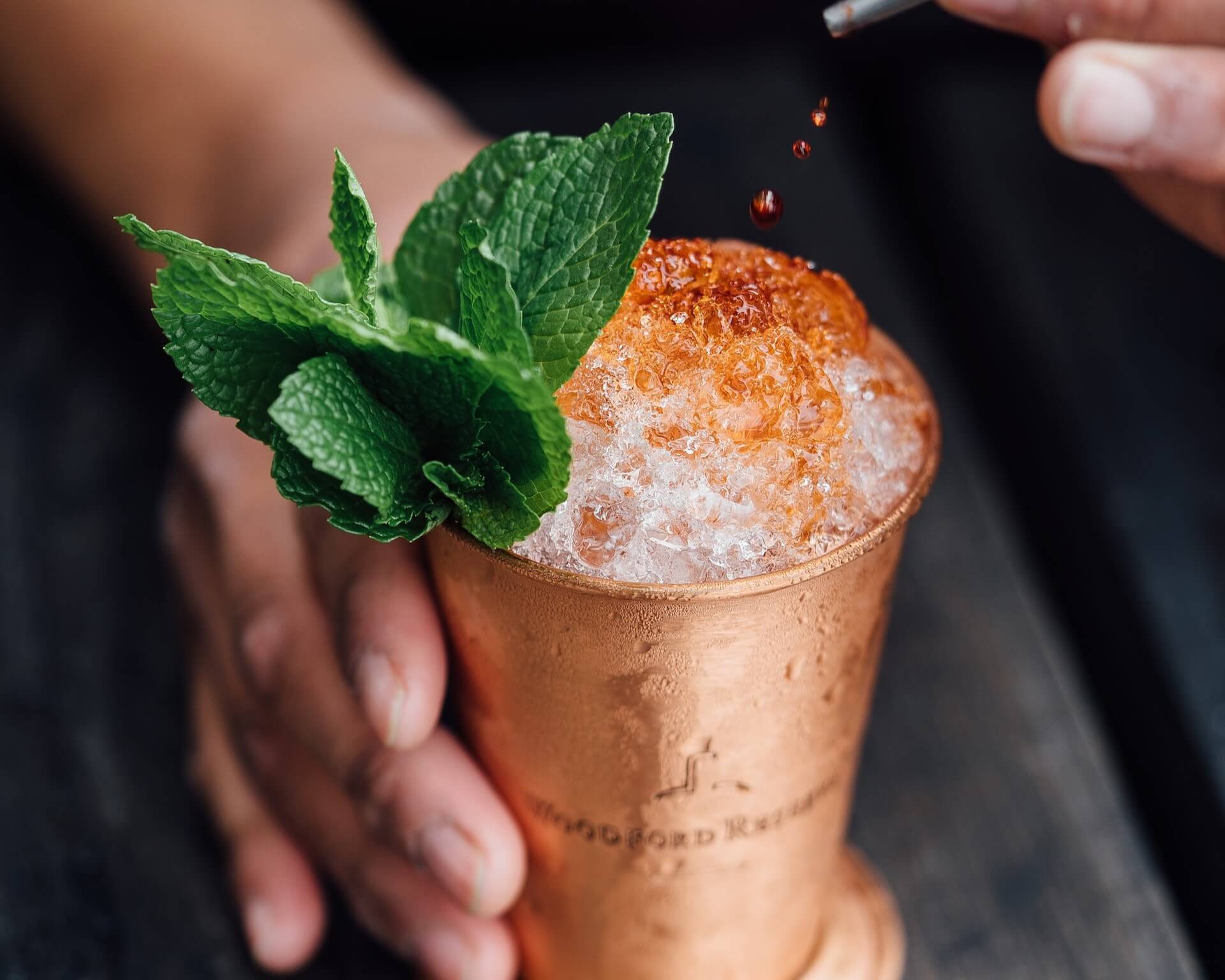2 Big Bourbons: High Proof, Heavy Flavor
by David Klemt

Be on the lookout for two innovative, big bourbons that are heavy on flavor and boldly offer striking drinking experiences.
One of these whiskeys, luckily, is available now. That means if you can get your hands on it, this particular bourbon has arrived in time for National Bourbon Day and National Old Fashioned Day.
And, of course, it’s also here in time to help celebrate Father’s Day.
Agonizing as it is, the other bourbon will make its appearance in August. However, it’s big, bold flavors will be an excellent way to end summer and start fall.
Let’s take a look at these two dramatic drams.
Woodford Reserve Master’s Collection Batch Proof 124.7
Let’s start with the bourbon available today.
The latest release in the Master’s Collection is Batch Proof 124.7. This limited-edition Woodford Reserve release is, as the name suggests, a high-proof heavy hitter.
Master Distiller Elizabeth McCall and Master Distiller Emeritus Chris Morris worked on this release to showcase their incredible proficiency in coaxing a complex array of flavors from blending whiskeys from different barrels.
However, they didn’t stop there. McCall and Morris bottled this year’s limited edition Master’s Collection expression at 124.7 proof. For comparison, standard Woodford Reserve expressions—Straight Bourbon, Double Oaked, and Rye—are bottled at 90.4 proof.
View this post on Instagram
According to tasting notes provided by Woodford Reserve, guests can expect Batch Proof 124.7 to pour a burnt orange color. On the nose, nutty toasted almond, cherry, and overripe banana, plus hints of oak, citrus zest, and, unsurprisingly, pepper.
“The trademark flavors of Woodford Reserve are even more pronounced—and more bold—in this celebrated annual release,” says McCall. “It’s a high-proof bourbon with complex flavors.”
Those lucky enough to locate a bottle will be treated to peppery baking spice, cardamom, and pine on the palate, finishing with leather, dry vanilla, and cedar.
No word on how hot this bourbon sips, but I expect Woodford’s trademark smoothness. Suffice to say, however, this isn’t a beginner’s bourbon.
Batch Proof 124.7 retails for $129.99 and is available now at the Woodford Reserve distillery, so it’s time to hit up your reps, call in favors, or take a trip to Versailles, Kentucky.
Bib & Tucker Double Char Bourbon
Above, the high-proof heavy hitter. Now, the innovative heavy flavor release.
They’re making us wait for it but this Bib & Tucker Small Batch Bourbon release certainly appears to worth our collective patience. Something savory, smoky, and smooth this way comes.
The inspiration for this unique bourbon comes from the rustic corners of the culinary world. Double Char is meant to evoke the sensory experience of enjoying food cooked on open fire.
“I can’t wait for consumers to try this delicious expression,” says Tom Steffanci, president of Deutsch Family Wine & Spirits. “Double Char spends just the right amount of time in the second heavily charred barrel, creating a savory, smoky character that adds a whole new dimension to the bourbon.”
View this post on Instagram
This innovative Tennessee bourbon is rested for six years in new white American oak barrels. Double Char is then aged for at least five months in a new barrel that was heavily charred and smoked.
Notes provided by Bib & Tucker reveal, as expected, smoke and toasted oak on the nose. However, those notes are balanced by cinnamon, clove, and dulce de leche.
On the palate, Double Char delivers white smoke, vanilla, sugar maple, sweet corn, and toasted cinnamon. Oak, white smoke, and vanilla stand out on the medium to long finish.
Personally, I can’t wait to get my hands on a bottle.
Click here to listen to episodes 32 and 59 of the Bar Hacks podcast. The former features Woodford Reserve, while the latter features Bib & Tucker.
Images courtesy of Bib & Tucker and Woodford Reserve

















